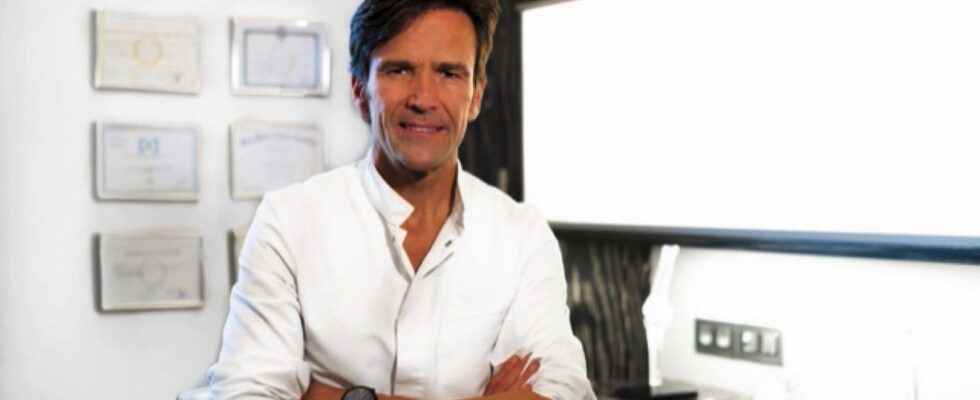Updated
Complete tears are especially common among athletes. Dr. Philippe Paillard gives an update on the various interventions.
Paris Match. Are there several possible ruptures of this tendon?
Dr Philippe Paillard. Yes. I remind you that it allows the plantar flexion of the foot and its propulsion and that it connects the calf muscles to the heel, where it fits on the calcaneus bone. The largest tendon in the human body, it is nevertheless poorly irrigated, hence a certain fragility which favors, especially among athletes, the occurrence of micro-lesions, tendonitis, even partial ruptures, whether spontaneous or not. The complete rupture is the fact of a brutal tensioning during a physical effort in propulsion and acceleration. The pain is sharp, sudden, accompanied by an audible snap. Immediate support is impossible. More remotely, the subject may walk with a limp, which sometimes misleads the diagnosis (15 to 20% of cases). The clinical examination does not deceive the specialist: it is impossible for the injured person to stand on tiptoe on the affected side. The depression between the two severed tendinous edges is sometimes palpable and visible under the skin. More often it is not due to the hematoma and edema that has filled this space. An ultrasound or MRI confirms the rupture and its type: 1. High, at the junction between the muscle and the tendon proper. 2. Intermediate, the most common, in the middle of the tendinous body, where it is most prominent under the skin (about 4 centimeters above the heel) and also the most fragile. 3. Low: the tendon has become disinserted from its bony attachment to the heel.
Read also: Plantar pain. Thanks to imaging, finally treatments.
Are there contributing factors?
Yes. Typically, it is the sportsman aged 30 to 50, practicing a sport requiring strong or numerous propulsions (tennis, running, basketball, football, etc.). Dehydration, overweight favor the accident, as well as anabolics. In non-athletes, complete ruptures are favored by age, various comorbidities (diabetes, obesity especially) and certain medications (corticoids and the quinolone antibiotic family). In total, this pathology affects 20,000 people per year in France (30 cases/100,000).
Various treatments are available. What are their respective indications?
The orthopedic cast is often reserved for very inactive and fragile people. The immobilization it imposes, typically ten weeks, now tends to be shortened. Its disadvantages are: an increased risk of phlebitis and skin lesion under plaster, a longer recovery, more restrictive monitoring, a risk of recurrence (5%) ten times greater than that of surgery. The latter, via three types of possible operations carried out on an outpatient basis (under general or local anesthesia), ensures optimal repair in expert hands at the cost of very rare complications (skin, nerves): 1. Open surgery (45 at 60 min) allows via an incision of about 5 centimeters to connect the two tendinous banks by direct suturing. Its best indication is the rupture in full tendinous body. A minimally invasive version of this gesture, which a guiding instrument placed on either side of the severed tendon makes possible, is currently being evaluated. It limits the incision to 2 centimeters. 2. Low disinsertion requires anchoring traction threads in the heel bone to then pass them through the tendon before tying them (60 min). 3. Tenolig is a percutaneous treatment without opening (30 min) well suited to high lesions. A few millimetric micro-incisions allow wires armed with micro-harpoons to pass through the skin and the injured segments, under ultrasound control, which are attached to the muscle and bring the two sides of the tendon closer together. Blood platelets from the patient, rich in growth factors, called PRP, are injected into the repaired area to optimize its healing. Whatever the surgery used, the subjects are put on anticoagulants, must wear a resin boot for six weeks, then heel pads of decreasing thickness for three weeks and be actively rehabilitated for three to four months. Running becomes possible after four to six months. The recurrence rate does not exceed 0.5%. More than 95% of amateur athletes recover normal sports activity after one year. Professionals (basketball players in particular) only regain full function of the tendon after two years (80% after one year).
